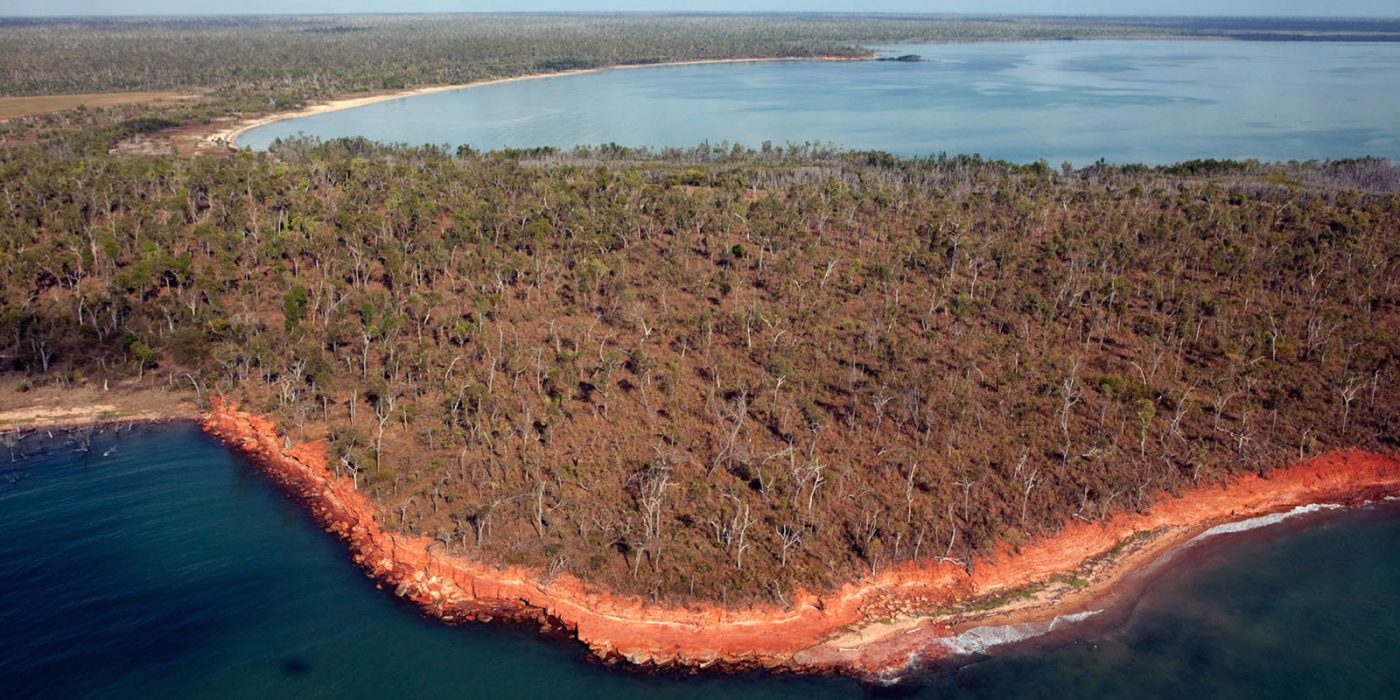
Our country
Our country is a rich ecosystem, full of culturally important places, plants and animals. It is also some of the most pristine country in northern Australia. Our sea country has beautiful sandy beaches, rocky shores and reefs, offshore islands and vast mangrove-lined rivers that flow into the Arafura Sea. Our land country has internationally renowned wetlands and river systems that are exceptional both in their extent and their ecological integrity.
We work along the coast from Cuthbert Point to Cape Stewart, inland following the Mann/Liverpool rivers system in the west, and along the Blyth River in the east. This is more than 14,000 square kilometres of country. The land tenure throughout our area of operation is Inalienable Aboriginal Freehold, which is held by the Arnhem Land Aboriginal Land Trust on behalf of the traditional Aboriginal owners to whom the land was granted under the Commonwealth Aboriginal Land Rights (NT) Act 1976.
Our region of operation is home to the Arnhem Land rock-rat, green turtle, black wallaroo and grass-throated wren. It is the country of stringybark trees, pandanus, jungle vines and orchids. It is also the home of more than 2500 people living either in the community of Manayingkarríra/Maningrida or at the outstations on homelands throughout the region. People here speak many different languages, and their land and sea country is divided into 102 clan estates.
Our country is part of our languages and culture and who we are. The ownership and management of the land and its resources remain governed by customary rights that are passed down from both parents. Land ownership is primarily inherited from one’s father (patrilineal) but responsibilities for land and resource management can also come from one’s mother’s estate (matrilineal). Managers of the land through their mother’s country are called djungkay.
Each clan estate is vested with djang/wangarr, the life-giving transformative power that accounts for every aspect of existence, and is associated with numerous sites of cultural significance, sometimes referred to as sacred sites. Landowners as well as djungkay hold important responsibilities to physically and spiritually protect these sites, and landowners on whose country we work guide us in everything that we do.
Djelk IPA
The Djelk Indigenous Protected Area (IPA) is a voluntary formal agreement between the land’s traditional owners and the Australian Government. The agreement involved consultations and collaborative planning across more than eight years, and the landowners and Bawinanga Rangers declared the Djelk IPA together in 2009. The country of the Djelk IPA covers over 6700 square kilometres, which is nearly half the area of our land-based operations.
Achieving and maintaining the Djelk IPA helps to protect biodiversity and promote a balance between conservation and sustainable uses that benefit the land’s owners and managers. Landowners decided to manage the Djelk IPA region as a Category VI, defined by the International Union for Conservation of Nature (IUCN) as:
[An] area containing predominantly unmodified natural systems, managed to ensure long-term protection and maintenance of biological diversity, while at the same time providing a sustainable flow of natural products and services to meet community needs.
IPA status makes country part of the National Reserve System – the same system that also protects Australia’s national parks for future generations – and binds us to manage the Djelk IPA region to international standards set out by the IUCN. As part of the agreement with the Australian Government, we receive support and the commitment of partner agencies to work with us to manage this region’s ecological and cultural values as directed by its landowners.
The current Djelk IPA shares a narrow overlap of country and a 50 km border with the Wardekken IPA to the west, where adjoining clans have shared responsibilities for country. Together, the two IPAs cover an area larger than Kakadu and Nitmuluk national parks. The Bawinanga Rangers are applying to have the coastal boundaries of the existing Djelk IPA expanded to include a substantial area of sea country that we already manage with landowners and djungkay.
Threats
Working with landowners, we have identified 12 major threats to the health of our country. Our operational activities aim to mitigate the impacts of these threats, making our country healthier and enabling landowners and djungkay to fulfill their cultural responsibilities.
- Empty country
- Loss of knowledge
- Pigs
- Buffalo
- Weeds
- Unhealthy fire
- Problem animals
- Visitors
- Mining
- Climate change
- Commercial and illegal fishing
- Coastal pollution
